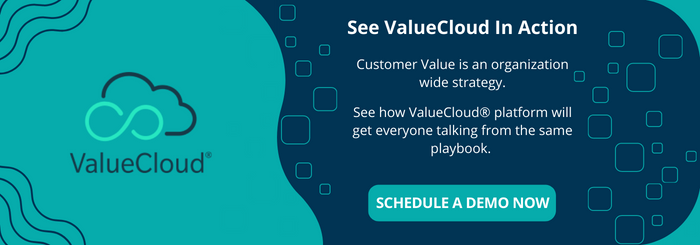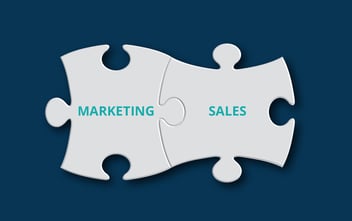The Evolution of Solution-Based Selling Methodology

As a sales professional, your primary responsibility is to generate sales. Throughout history, numerous sales methodologies have been developed for selling products and services. Traditionally, product selling—directly persuading customers to purchase a product—has been the standard approach. However, when this method became insufficient, sales shifted focus from the product itself to the solutions provided by the product.
Solution-based selling is gradually being replaced by value selling. But what distinguishes solution-based selling from value selling? In this article, we will examine the concept of solution-based selling, explore its limitations, and discuss how value-based selling represents the next step in the evolution of sales methodologies.
What Is the Methodology of Solution-Based Selling?
Solution-based selling focuses on how the product solves the customer’s problem. Rather than focus on the product, this method of selling is centered around the outcomes of using the product. A solution seller takes time to find out what unique issues the prospect is facing, unearthing their root cause and presenting their product as the best tool that solves that problem.
Since solution-based selling relies heavily on solving a customer's pain points, it often draws much from consultative sales. The sales representative has to ask plenty of questions to understand and empathize with the customers' needs and provide a relevant package. Most solution sellers must develop tailored packages for different customers to cater to their unique needs.
Often, the prospect might not even know of a problem or an opportunity to improve their processes. As part of the sales process, a sales representative is often responsible for helping them identify their problems, highlighting the importance of addressing the issue, and pointing to the solution.
Some of the benefits of solution-based selling include:
- A customized approach to sales: Solution-based selling emphasizes understanding the customer's unique challenges and tailoring the sales approach accordingly. By focusing on the prospect's specific issues, sales reps can present their products or services in a way that demonstrates how they can effectively address those problems. This customized approach increases the likelihood of successfully closing the sale and ensures that the customer feels understood and valued, resulting in a more satisfying purchasing experience.
- Deeper engagements with the customer: By taking the time to discover the prospect's problems and needs, sales professionals using the solution-based selling method develop a deeper connection with their customers. This rapport-building process fosters trust and credibility, essential in establishing a strong business relationship. Engaging with the customer more personally and demonstrating genuine concern for their issues can lead to higher customer satisfaction and loyalty, ultimately increasing the chances of closing the sale and maintaining a long-term business relationship.
This sales methodology became popular in the 1980s and has been the go-to for many salespeople. However, as products and customers have evolved, several areas for improvement have emerged from the solution-based selling methodology.
What Is Wrong With Solution-Based Selling?
Solution-based selling was perfect in the past decades since customers either didn’t know they had a problem or acknowledged it but didn’t know how to solve it. Sales agents honed the art of finding these problems and engineering solutions for them and thus could comfortably close the sale.
However, today’s prospect is much more informed. There is plenty of information accessible to anyone these days. Procurement teams come armed with data and can quickly diagnose problems and define solutions without your help. Anyone connected to the internet can easily research and compare features, prices, and solution packages. In other cases, the customer might not feel like change is necessary and will not be interested in your solution. They might also not be convinced that using your product will bring enough results to justify the investment.
Solutions are no longer enough to sell to today’s customers, and that’s where value-based selling comes in. The big shift has been from selling solutions to providing value to the customer, which is the basic premise of value selling. Rather than just providing customers with a solution, the emphasis is on creating and communicating value to the customer.
What Is Value-Based Selling?
Value-based selling focuses on how your customer will get value from purchasing your product or service. Like solution-based selling, value selling keeps an eye on the customer’s problems and needs but centers on the benefits of using the solution rather than the solution itself.
With value selling, your prospect can measure what value they get from buying your product with real numbers. This methodology allows customers to quantify their problem costs and demonstrates that your product or service is worth their investment. Some of the ways to highlight the value your product or service provides your client include:
- Money saved by adopting your solution: Demonstrating the cost savings associated with it is a powerful way to showcase its value. Sales teams can achieve this by comparing the costs of their product or service with those of competitors or the costs of maintaining the status quo. This may include reduced overhead, lower maintenance costs, increased efficiency, or decreased waste. Providing concrete examples or case studies of other customers who have experienced significant cost savings can further strengthen your argument.
- Money made through the product: Another compelling way to demonstrate value is by showing how your product or service can directly contribute to increased revenue for your prospects. This can be achieved by highlighting features that drive sales, enhance customer retention, or open up new market opportunities. Sales teams can present data or case studies illustrating how other customers have experienced revenue growth after adopting your solution. This helps prospects envision the potential financial gains they could experience by implementing your product or service.
- Risks reduced through your product: Reducing risk is an important consideration for many customers, as it can significantly impact their bottom line and overall business stability. Sales teams can demonstrate the value of their product by showcasing how it mitigates specific risks, such as data breaches, production downtime, or regulatory non-compliance. Providing evidence of how your solution has successfully reduced risk for other clients, or offering industry data to support your claims, can help reinforce the value of risk reduction for your prospects.
- Qualitative value: In some cases, it may be challenging to quantify the exact monetary value of your product or service. However, sales teams can still convey value by emphasizing the qualitative benefits associated with your solution. This may include improved customer satisfaction, increased employee productivity, enhanced brand reputation, or stronger industry partnerships. By sharing testimonials, case studies, or expert opinions highlighting these qualitative benefits, sales teams can paint a compelling picture of how your product can improve various aspects of a prospect's business, even if the specific financial impact is not easily quantifiable.
Would you like to see ValueCloud in action? Book a no-obligation demo now.
Value-Based Selling vs. Solution-Based Selling
On the surface, value selling and solution-based selling are similar in that they both:
- Emphasize and start by finding out the prospect's pain points: Both value-based and solution-based selling approaches prioritize understanding the customer's challenges and pain points. Sales professionals use these methods to ask probing questions, actively listen, and conduct thorough research to gain a deep understanding of the prospect's issues. By identifying the problems the prospect faces, sales teams can tailor their sales pitch to address these pain points and demonstrate how their product or service can resolve them effectively.
- Aim to provide value to the customer: Both selling approaches share the primary goal of delivering value. In solution-based selling, sales professionals present their products or services as the solution to the prospect's identified problems. On the other hand, value-based selling takes a more comprehensive approach by showcasing the overall value of the product or service, considering both tangible and intangible benefits. In both cases, the emphasis is on illustrating how the offering can improve the prospect's situation, solve their challenges, and ultimately provide value to their business.
- Concentrate more on the customer than the product: Customer-centricity is a key aspect of value-based and solution-based selling. Instead of focusing solely on the product's features and specifications, sales professionals using these methods prioritize understanding the customer's needs, preferences, and concerns. They build rapport and trust with the prospect, ensuring they feel heard and understood. By placing the customer at the center of the sales process, sales teams can tailor their pitch to address the prospect's unique requirements and demonstrate how their product or service can effectively meet those needs. This customer-focused approach is more likely to result in successful sales outcomes and long-term customer satisfaction.
The main difference comes in how they present the product to the prospect. The solution seller focuses on how the product solves the customer’s pain. The solution takes center stage, and the salesperson aims to prove to the customer that their product has the right features to fix their issue or help them reach their goals.
Value selling goes beyond solving the problem and goes into the results of using the product or service. A value seller is concerned about the real-life impact of the product, especially the return on investment (ROI) implementing the solution brings.
Perks of Value-based Selling
Value-based selling can help your product to stand out to your prospect among the competition. This is because you spend time not only finding out their pain points and providing a solution but you also describe exactly how they can get value from using your product.
Value selling done well can also aid your customer relationship management (CRM) strategy during the sales process and as a customer. Since you’ll spend a lot of time with the customer as you seek to provide value, you will naturally focus on how to improve their experience. This builds trust in your business from the beginning and translates to a better customer relationship.
Should You Stick With Solution-Sased Selling or Make the Change to Value Selling?
Changing from solution-based selling to value selling might seem like a complicated and taxing process, especially if you’re already achieving some measure of success with your current methodology. Value selling requires more research and time spent with the prospect trying to demonstrate value. You would also need to develop a strong value-selling framework within your team to make the most out of this methodology.
However, value-based selling sees the best results in the modern sales landscape. Solution-based selling only provides a picture of the future, while value selling provides both the vision and the steps to get there, with real-world proof that the system works. Transitioning to value-based selling helps you craft more compelling pitches to your prospects, helping them to overcome their resistance to change while solving their problems.
How Do You Approach Value-based Selling?
You need a good value selling framework to properly integrate this methodology into your sales process. This framework will help you stick to your goals and achieve successful value-based selling. To build a successful framework for your value selling, you should consider doing the following.
Understand Your Unique Selling Point (USP)
A clear understanding of the product is essential to communicating value to your prospects. You’ll need to understand what sets your product apart and what value you can provide that your competitors do not.
A USP is the unique feature, benefit, or characteristic that sets your product or service apart from the rest. Value-based selling, a modern sales approach that focuses on customer value, provides an ideal framework to identify and leverage your USP. This article will guide you through understanding your USP in a value-based selling framework and how to use it effectively to boost sales and customer satisfaction.
- Analyze your product or service
The first step in identifying your USP is thoroughly analyzing your product or service. Evaluate its features, benefits, and overall value proposition. Consider the problems it solves, the needs it addresses, and the benefits it brings to customers. This analysis will help you identify the unique aspects of your offering that differentiate it from competitors and resonate with your target audience. - Understand your target market
Your USP should be tailored to your target market. Conduct market research to understand your target audience's preferences, pain points, and expectations. Identifying the most relevant aspects of your product or service for your target audience will enable you to create a compelling USP that connects with your customers on a deeper level. - Study your competition
An essential aspect of developing a strong USP is understanding how your competitors position themselves. Study their products or services, marketing strategies, and value propositions. By identifying gaps or weaknesses in your competitors' offerings, you can craft a USP that highlights your strengths and sets you apart. - Focus on the value delivered
A value-based selling framework emphasizes the value provided to customers rather than simply listing features or benefits. Your USP should communicate the unique value your product or service delivers. This can include cost savings, increased efficiency, or improved customer satisfaction. By focusing on the value delivered, you can create a USP that resonates with customers and helps you stand out in the market. - Test and refine your USP
Once you have identified your USP, it is essential to test and refine it. Gather customer, colleague, and industry expert feedback to ensure your USP effectively communicates your unique value proposition. Based on this feedback, adjust and fine-tune your USP to create a compelling message that resonates with your target audience. - Integrate your USP into your value-based selling strategy
After establishing your USP, integrate it into your overall value-based selling strategy. This includes incorporating it into your sales pitch, marketing materials, and customer interactions. Ensure your sales team understands and can effectively communicate your USP to prospects, emphasizing your product or service's unique value.
Research Your Prospects
A value-based selling approach focuses on the unique value your product or service delivers to customers rather than simply listing features or benefits. To maximize the effectiveness of this approach, it is crucial to understand and analyze your sales prospects. This article will guide you through analyzing your sales prospects within a value-based selling framework to ensure you are targeting the right customers and effectively demonstrating the value your offering provides.
- Identify your ideal customer profile
The first step in analyzing your sales prospects is to define your ideal customer profile (ICP). An ICP is a detailed description of the customer who will most likely benefit from your product or service. This includes company size, industry, location, and specific pain points or challenges your offering addresses. By defining your ICP, you can better target your sales efforts and focus on prospects most likely to recognize your value. - Research your prospects
Before engaging with a prospect, conduct thorough research to understand their business, industry, and unique challenges. This information will help you tailor your value-based selling approach to their needs, making your pitch more relevant and compelling. Use tools such as company websites, social media, industry reports, and press releases to gather information about your prospects. - Prioritize your prospects
Not all prospects are created equal. Some will be more receptive to your value-based selling approach and more likely to recognize the value your offering provides. Prioritize your prospects based on their fit with your ICP, the potential deal size, and their likelihood of becoming long-term customers. By focusing on high-priority prospects, you can allocate your time and resources more efficiently and increase your chances of success. - Determine the decision-makers
In the context of value-based selling, engaging with the right decision-makers within your target organization is essential. These individuals are responsible for making purchase decisions and can directly influence the outcome of your sales efforts. Identify the key decision-makers within your prospect's organization and tailor your approach to address their specific concerns, goals, and motivations. - Assess their pain points and needs
Understanding your prospects' pain points and needs is crucial for demonstrating the value your offering provides. Through your research, identify the challenges they face and the goals they aim to achieve. This will help you position your product or service as a solution that addresses their specific needs and delivers tangible value. - Develop a value proposition tailored to your prospects
Once you have analyzed your prospects and understand their needs and pain points, develop a value proposition tailored to each prospect. This value proposition should emphasize the unique benefits your offering provides, such as cost savings, increased efficiency, or improved customer satisfaction. By presenting a tailored value proposition, you can demonstrate how your product or service directly addresses the needs of your prospects, increasing your chances of closing the deal. - Nurture your prospects
Value-based selling requires building long-term relationships with your prospects. To achieve this, nurture your prospects throughout the sales process by providing valuable content, insights, and support. This can include sharing industry trends, offering case studies, or hosting webinars. By consistently demonstrating your commitment to providing value, you can build trust and credibility with your prospects, increasing the likelihood of them becoming customers.
Summary
Solution-based selling has been a successful sales methodology for a long time. However, as competition continues to increase and the line separating products becomes thinner by the day, finding differentiation in the market can take time and effort.
Value-based selling helps you to stay ahead of the curve. Rather than explain your product's features like everyone else, you focus on how you can provide unique value to each customer, which sets you apart from the rest. Your prospects no longer feel like they are just being sold a product. They understand that you care for them and are dedicated to making them succeed.
You can achieve successful value-based selling by researching the prospects, understanding your unique selling points, and identifying the value you can provide the client.

 ValueCloud
ValueCloud
.png?width=118&height=76&name=Rectangle%20(3).png) ValueCloud Ignite
ValueCloud Ignite
.png?width=92&height=92&name=Rectangle%20(4).png) Free Assessment
Free Assessment
.png?width=100&height=100&name=Rectangle%20(5).png) Watch a Demo
Watch a Demo
.png?width=82&height=96&name=Rectangle%20(6).png) Value Calculator
Value Calculator

.png?width=62&height=51&name=Group%2010%20(1).png) Marketing
Marketing
 Sales
Sales
 Customer Success
Customer Success
 Engage Prospects
Engage Prospects
 Win Deals Faster
Win Deals Faster
 Retain Customers
Retain Customers
.png?width=62&height=62&name=Rectangle%20(8).png) Adopt and Scale
Adopt and Scale
.png?width=54&height=54&name=Rectangle%20(9).png) Cybersecurity
Cybersecurity
 Healthcare
Healthcare
.png?width=54&height=54&name=Rectangle%20(10).png) IT & Software
IT & Software




